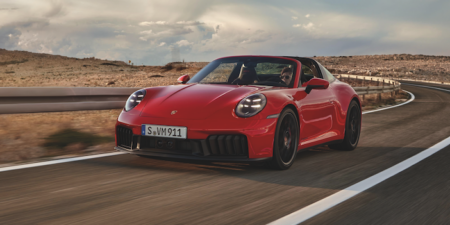BWI Group is set to begin production of a new, second-generation adaptive powertrain mount that uses magneto rheological (MR) mass-control technology to improve vehicle refinement and stability. By increasing the range of frequencies managed by the system, the ‘Gen 2’ technology extends the scope of application beyond high-performance cars, to include those where the emphasis is on refinement.
“The drive for reduced CO2 emissions means that strategies such as engine downsizing, cylinder deactivation and stop-start are becoming common on even performance-biased vehicles, but each has unfavorable effects on NVH,” explained Tim Schlangen, BWI Group’s mounts engineering manager.
“As a result, a new approach to powertrain isolation is required and we believe our adaptive mount is the solution. It reduces powertrain noise and vibration, improves vehicle stability and isolates the occupants from undesirable torque step events, such as quick vehicle cornering or wide open throttle.”
Below: The adaptive powertrain mount operates over a wide frequency range, partly due to the inclusion of a decoupler system (shown in green)
The mount uses MR fluid to change the damping rate in real time. The second generation can operate over a wider frequency range than the first version, partly due to the inclusion of a decoupler system, which creates a secondary path through which the MR fluid can pass, reducing mount stiffness. This enables the mount to be used on a wider selection of vehicle segments.
The Gen 2 MR mounts have been improved further by the refinement of the copper coil and magnets within the units; the internal systems have been improved to give faster response and the control software has increased functionality. The combined effect is a more streamlined development process that reduces the need for test track time and access to development vehicles.
“This new level of tuneability enables us to further optimize the mount stiffness for more situations,” added Schlangen. “The first generation MR mounts prevented large transient powertrain events in the range 2-22Hz from reaching the chassis; Gen 2 retains this capability while also isolating the chassis from smaller amplitude movements in the range 30-150Hz, which is critical for refinement.”
The Gen 2 technology is proving so effective that some OEM customers are finding that vehicle suspension settings no longer have to be compromised in order to deal with particular engine vibration modes. Vehicle occupants experience a dramatic increase in the perception of quality, stability and security, as a result of reduced vehicle shake.
Developing a decoupler to work with MR fluid was particularly challenging because it is much denser than conventional passive mount glycol fluid. Much of the technology in the decoupler, such as the rubber and metal component geometry, and the rubber formulation, drew on core skills within BWI to develop solutions that remain proprietary to the company, according to Schlangen.
“We know that competitor systems work by cancelling the vibration after it has been generated, but our system is the only one which prevents it from occurring,” he stated.




